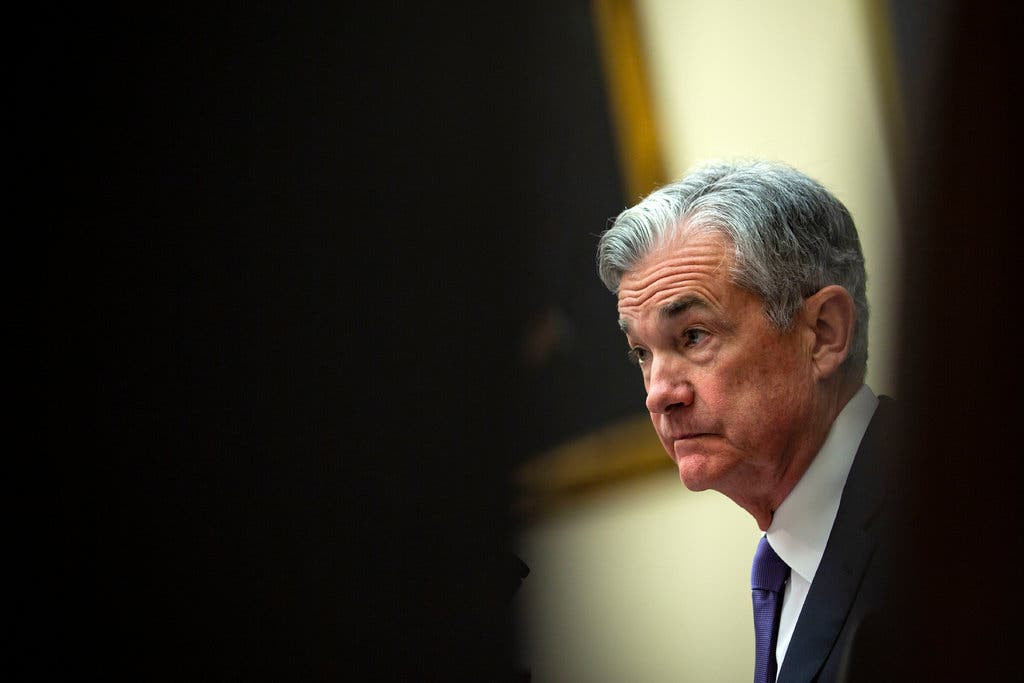The loonie was trading 0.3 per cent lower at 1.3470 to the U.S. dollar, or 74.24 U.S. cents, after touching its strongest intraday level since March 8 at 1.3420.
“We’re pulling back today because Chinese stocks cooled down a bit overnight and because EUR-USD collapsed this morning following the better-than-expected U.S. new home sales numbers,” said Erik Bregar, director, FX & precious metals risk management at Silver Gold Bull.
“Both factors have unleashed broad USD buying, which is pressuring the Canadian dollar.”
Stocks globally pulled back from the record high they posted on Tuesday when China’s central bank unveiled its biggest stimulus since the pandemic.
Mainland Chinese blue chips ended up 1.5 per cent but gave back some of their earlier gains, while the price of U.S. oil, one of Canada’s major exports, fell 2.5 per cent to $69.73 a barrel.
The U.S. dollar rallied against a basket of major currencies, including the euro, as data showed sales of new U.S. single-family homes fell less than expected in August.
Canadian Prime Minister Justin Trudeau looked set to survive a vote of confidence later on Wednesday after his main political rival appeared to fail to muster enough support to end nine years of Liberal Party rule. The vote was due at about 3:30 pm ET (1930 GMT).
Canadian government bond yields moved higher across the curve, tracking moves in U.S. Treasuries. The 10-year was up 3.8 basis points at 2.997 per cent, after earlier touching its highest level since Sept. 9 at 3.013 per cent.
Canadian Dollar Strength
The USD/CAD pair trades close to a fresh six-month low near 1.3430 in Wednesday’s European session. The Loonie asset remains under pressure as the Canadian Dollar (CAD) performs strongly on China’s massive stimulus announcement, which has strengthened the Oil price outlook.
It is worth noting that Canada is the leading exporter of Oil to the United States (US) and higher Oil prices result in an acceleration in inflows towards the Canadian Dollar. However, its outlook could worsen as the Bank of Canada (BoC) is expected to ease its monetary policy further.
Meanwhile, the US Dollar (USD) strives to gain ground above the yearly low, with the US Dollar Index (DXY) trading above 100.20. The US Dollar rebounds even though investors expect the Federal Reserve (Fed) to reduce interest rates further aggressively.
For fresh interest rate guidance, investors will focus on the US core Personal Consumption Expenditure price index (PCE) data for August, which will be published on Friday. The core PCE inflation is estimated to have grown by 2.7%, higher than 2.6% in July.
Technical Outlook
USD/CAD prints a fresh swing low near 1.3400 on a daily timeframe, suggesting a firm bearish trend. The Loonie asset weakens after slipping below the August 28 low of 1.3440. A declining 20-day Exponential Moving Average (EMA) near 1.3550 indicates more downside.
The 14-day Relative Strength Index delivers a range shift move into the 20.00-60.00 territory from 40.00-80.00, which suggests that pullbacks would be considered as selling opportunities by investors.
Going forward, a further correction by the major below the immediate support of 1.3400 would expose it to January 31 low of 1.3360 and June 9 low of 1.3340.
In an alternate scenario, a recovery move above the psychological support of 1.3500 would drive the asset towards April 5 low of 1.3540, followed by September 20 high of 1.3590.
Factors Affecting the Canadian Dollar
The key factors driving the Canadian Dollar (CAD) are the level of interest rates set by the Bank of Canada (BoC), the price of Oil, Canada’s largest export, the health of its economy, inflation and the Trade Balance, which is the difference between the value of Canada’s exports versus its imports. Other factors include market sentiment – whether investors are taking on more risky assets (risk-on) or seeking safe-havens (risk-off) – with risk-on being CAD-positive. As its largest trading partner, the health of the US economy is also a key factor influencing the Canadian Dollar.
Interest Rates
The Bank of Canada (BoC) has a significant influence on the Canadian Dollar by setting the level of interest rates that banks can lend to one another. This influences the level of interest rates for everyone. The main goal of the BoC is to maintain inflation at 1-3% by adjusting interest rates up or down. Relatively higher interest rates tend to be positive for the CAD. The Bank of Canada can also use quantitative easing and tightening to influence credit conditions, with the former CAD-negative and the latter CAD-positive.
Oil Prices
The price of Oil is a key factor impacting the value of the Canadian Dollar. Petroleum is Canada’s biggest export, so Oil price tends to have an immediate impact on the CAD value. Generally, if Oil price rises CAD also goes up, as aggregate demand for the currency increases. The opposite is the case if the price of Oil falls. Higher Oil prices also tend to result in a greater likelihood of a positive Trade Balance, which is also supportive of the CAD.
Inflation
While inflation had always traditionally been thought of as a negative factor for a currency since it lowers the value of money, the opposite has actually been the case in modern times with the relaxation of cross-border capital controls. Higher inflation tends to lead central banks to put up interest rates which attracts more capital inflows from global investors seeking a lucrative place to keep their money. This increases demand for the local currency, which in Canada’s case is the Canadian Dollar.
Economic Data
Macroeconomic data releases gauge the health of the economy and can have an impact on the Canadian Dollar. Indicators such as GDP, Manufacturing and Services PMIs, employment, and consumer sentiment surveys can all influence the direction of the CAD. A strong economy is good for the Canadian Dollar. Not only does it attract more foreign investment but it may encourage the Bank of Canada to put up interest rates, leading to a stronger currency. If economic data is weak, however, the CAD is likely to fall.
The USD/CAD Forecast
The USD/CAD forecast shows a new low for the pair this year after the loonie soared on improved risk sentiment. On Tuesday, China announced a stimulus package to support the economy, boosting commodity currencies like the Canadian dollar.
The People’s Bank of China announced plans to cut lending costs by 50-bps among other measures to support the economy. China is a major consumer of most major commodities, including oil. Meanwhile, Canada is a net exporter of oil and benefits from higher global demand. Consequently, oil prices rose together with the Canadian dollar.
Furthermore, oil gained due to supply worries from tensions in the Middle East and a hurricane threat in the US.
Elsewhere, Bank of Canada governor Tiff Macklem delivered a dovish speech, increasing bets for BoC rate cuts. He noted that the central bank had made a lot of progress in lowering inflation. Notably, Canada’s inflation reached the 2% target in August. Therefore, market participants should expect more rate cuts in the future.
Meanwhile, the dollar fell after data showed weaker-than-expected consumer confidence. The CB’s consumer confidence number fell sharply from 105.6 in August to 98.7. Moreover, it revealed that people were finding it harder to get jobs. Worries about the labor market dented the greenback since it could mean a more dovish Fed.
After last week’s massive rate cut, market participants are expecting more data for clue on the next move. The main economic indicator is the core PCE due on Friday.
There won’t be any high-impact events in the US or Canada. Therefore, the pair might extend yesterday’s move.
Technical Analysis
On the technical side, the USD/CAD price has dropped sharply after breaking out of its bullish channel. The decline has broken several key support levels, including 1.3450. Moreover, the price has fallen far below the 30-SMA, with the RSI dipping into the oversold region.
Bears are in charge, and they are enthusiastic to push prices lower. However, USD/CAD might rebound to retest the recently broken 1.3450 level before continuing lower. The next major hurdle for the downtrend is at the 1.3400 level.
Conclusion
The Canadian dollar is expected to remain strong in the near term, supported by China’s stimulus package, rising oil prices, and a dovish Bank of Canada. The USD/CAD pair is likely to continue its downtrend, with the next major support level at 1.3400.

















